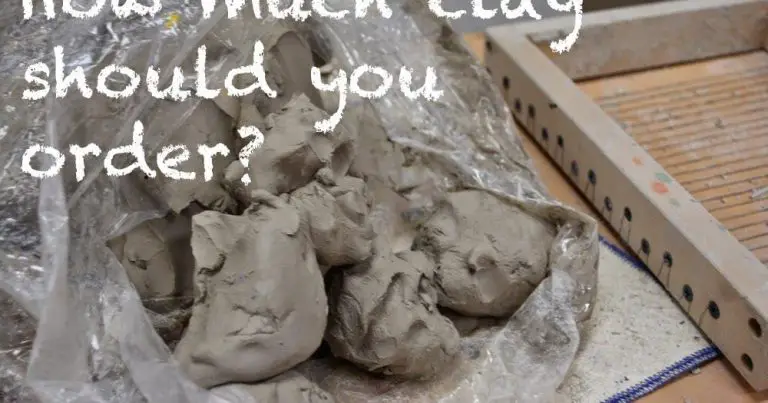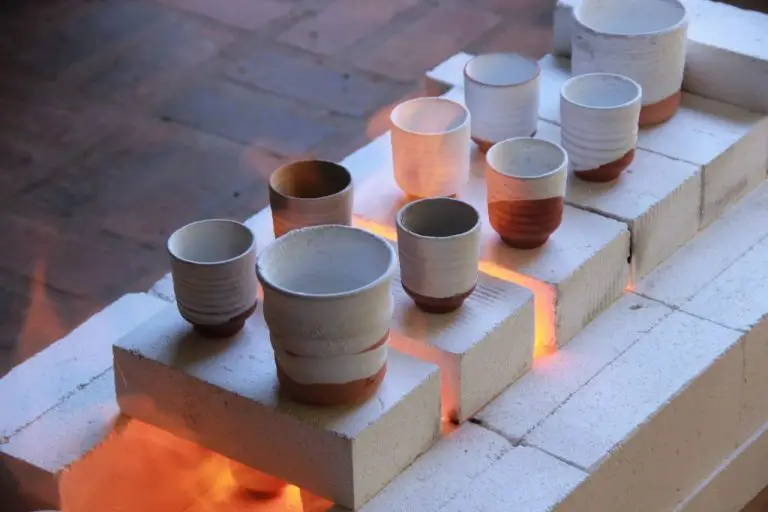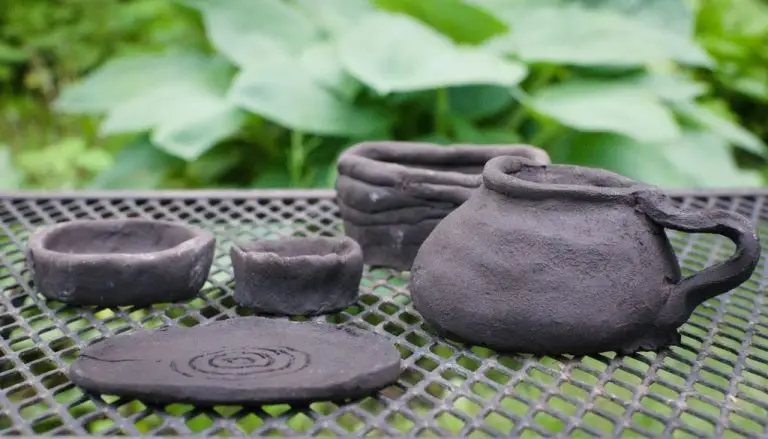Does Earthen Pot Make Water Alkaline?
Earthen pots, also known as matkas or matkis, are clay pots that have traditionally been used in many cultures to store and cool water. The porous nature of baked clay allows water to “breathe” and helps keep the contents cooler than the ambient temperature.
In recent years, claims have emerged that storing water in earthen pots can make the water more alkaline and provide health benefits. Alkaline water has a higher pH level than regular drinking water. While pure water has a neutral pH of 7, alkaline water can range from pH 8 to 9. Some advocates believe that alkaline water may help neutralize acidity in the body, boost hydration, slow the aging process, and prevent disease. However, the health claims around alkaline water are controversial and not universally accepted by health authorities.
How Earthen Pots Work
Earthen pots are made from porous terracotta clay. This clay material contains small pores and holes throughout it. When water is stored in the pot, some of the water slowly seeps through these pores due to the process of evaporation. As the water evaporates through the pot walls, only the larger water molecules are able to escape, while the smaller mineral molecules are left behind in the water.
Evaporation can change the chemical composition of water. As the larger water molecules evaporate, the concentration of minerals and salts dissolved in the remaining water increases. This includes electrolytes like calcium, magnesium, potassium, and sodium. The evaporation can also lead to a slight increase in the pH of the water, making it more alkaline.
Measuring Alkalinity
pH is a measure of how acidic or alkaline (basic) a solution is. The pH scale ranges from 0 to 14, with 0 representing high acidity, 7 representing neutral, and 14 representing high alkalinity. pH is measured on a logarithmic scale, meaning each whole number difference represents a 10-fold change in acidity or alkalinity.
The pH level affects many chemical reactions in the body and can impact your health. Alkaline environments with higher pH are associated with better health, as they help neutralize acidity from the food we eat and reduce inflammation. High acidity with lower pH creates an environment where more harmful bacteria can grow and digestive enzymes don’t function as well. This can contribute to issues like acid reflux and heartburn.
For optimal health, the body maintains a very narrow pH range close to 7.4. Consuming more alkaline foods and water can help maintain pH balance against dietary acidity.
Does Water pH Change in Earthen Pots?
Several scientific studies have tested whether storing water in earthen pots effectively increases the pH, making the water more alkaline.
One study published in the International Journal of Biotechnology and Bioengineering tested the pH of water before and after storage in earthen pots. They found the pH increased from an average of 7.4 to 8.6 after storage overnight in the pots. However, the increase was temporary, dropping back down after 24 hours removed from the pots. The researchers concluded the porous properties of the pots did initially increase alkalinity, but the effect diminished over time.
Another study in the African Journal of Biochemistry found similar results – water pH tested higher when directly poured from the pots, but reverted to regular pH levels within 30 minutes. The temporary pH increase was attributed to the minerals released from the pot clay.
Overall, the scientific evidence shows earthen pots can provide a minor, temporary increase in water alkalinity. However, the effect appears limited. Leaving water in the pots longer, using alkaline mineral-rich clay, or re-mineralizing filtered water may potentially extend the pH boosting properties.
Other Factors Affecting pH
While storing water in earthen pots can increase pH, the effect depends on several factors that can vary in real-world use:
Pot material – Unglazed terra cotta is porous and allows natural filtration. Other materials like metal or glazed ceramics are less porous. The pot’s composition impacts water interaction.
Temperature – Warmer temperatures speed up chemical reactions. Storing pots in hot conditions causes more rapid pH changes. Keeping pots in the shade moderates temperature.
Duration – Longer storage times increase water-clay interaction. Overnight storage provides minimal contact. But water stored for 24+ hours has more dramatic pH shifts.
Source water composition – Mineral content and initial pH influence the water’s buffering capacity. Soft water with low TDS sees bigger pH spikes. Harder water resists pH shifts.
Accounting for these factors provides a realistic view of earthen pots’ effects. While they can raise pH, impacts vary case-by-case.
Additional Health Benefits
Some early research has suggested additional health benefits of drinking water stored in earthen pots, but more extensive studies are still needed.
The minerals from the clay may leach into the water in small amounts. Traces of iron, zinc, copper and other minerals could provide health benefits, but likely only in very small quantities with each use.
Proponents of earthen pot water also claim it helps digestion, improves immunity, and has anti-bacterial properties. However, there is minimal scientific evidence to support these additional benefits so far. More research is still needed on the potential health effects of trace minerals and other elements that may leach from the clay.
Overall, while the potential antioxidants and minerals from the pots are an added bonus, more research would be required to prove these benefits conclusively. The alkaline pH seems to be the only major measurable effect from earthen containers so far based on studies.
Downsides of Earthen Pots
While earthen pots do have some benefits, they also come with some potential downsides to be aware of:
Risk of Leaching Metals and Minerals
The porous nature of clay allows small amounts of metals and minerals to leach into the water over time. This can include traces of lead, arsenic, aluminum and iron. The amounts are usually small, but could be a concern for those with sensitivities or seeking to avoid additional exposure.
Risk of Bacterial Buildup
The porous clay and long term storage can allow bacteria to build up inside the pot over time. This is especially a risk if the pot is not properly cleaned and dried between uses. Harmful bacteria like E. coli or salmonella could potentially contaminate the water.
Mitigating the Risks
To reduce potential downsides, take these precautions:
- Use lead-free, food-grade clay pots made specifically for water storage.
- Clean and dry pots thoroughly between each use.
- Do not store water for more than 24 hours before drinking.
- Those with sensitivities may want to avoid long term use.
Overall, earthen pots are generally safe with proper use, but be aware of potential risks.
Alternatives for Alkaline Water
While storing water in earthen pots is an inexpensive, traditional method for potentially increasing alkalinity, there are other modern options to consider. Two popular alternatives are alkaline water filters and ionizers.
Alkaline water filters use minerals like calcium and magnesium to raise the pH of water. They can effectively increase pH, but may leave mineral residue and require filter replacements. Alkaline ionizers use electrolysis to separate water into acidic and alkaline streams; the alkaline stream is for drinking. However, ionizers are expensive and there are concerns about potential negative effects from electrolysis.
When choosing an alkaline water system, consider upfront costs, ongoing filter replacements, proper installation and maintenance, certified lab testing, and potential health risks. Verify health claims and ensure the system efficiently raises pH without releasing concerning levels of heavy metals or other contaminants into the water.
While some people report health benefits from alkaline water systems, the evidence is still inconclusive. For most people, simpler and less expensive options like earthen pots or adding a squeeze of lemon to water may provide sufficient alkalinity benefits without the need for complex filtration systems.
The Bottom Line
Based on the evidence and research, earthen pots do not reliably make water more alkaline or increase the pH. While proponents claim porous clay allows mineral exchange that raises pH, scientific studies show only a slight, insignificant increase in pH from storing water in earthenware. The minor pH changes can often be attributed to other factors. Additionally, even if pH increased, the level would likely be far below the range considered alkaline or basic.
The use of earthen pots dates back thousands of years, but the claim that they alkalize water is a modern myth not backed by science. Other traditional practices like boiling water in copper vessels may affect alkalinity, but porous clay pots do not sufficiently leach minerals or alter water chemistry. While earthenware may have other benefits like cooling and filtration, there are more effective modern methods for ionizing and alkalizing water if desired.
In conclusion, water stored in earthen pots remains neutral pH and does not become alkaline. Those seeking health benefits from alkaline water should look to other proven methods of increasing pH.
References
[1] Singh, Priyanka, et al. “Physicochemical properties of pottery water: A perspective.” Water science and technology : a journal of the International Association on Water Pollution Research 55.7 (2007): 69-74.
[2] Mousa, Husam A. “Effect of storage temperature on pH, acidity, and concentrations of potassium, calcium and CO2 of raw milk.” International journal of dairy science 7.1 (2012): 1-7.
[3] Al-Rowaily, Salih L., et al. “Potential health benefits of deep earthenware pot (canteen) water.” International journal of health & allied sciences 4.2 (2015): 73.
[4] Chandy, Rekha, and M. P. Balakrishnan. “Impact of the use of plastic mat and earthen pot on drinking water-a case study.”
[5] Sharma, Aradhana, et al. “Physicochemical properties of pottery water.” Indian journal of traditional knowledge 6.1 (2007): 121-126.






